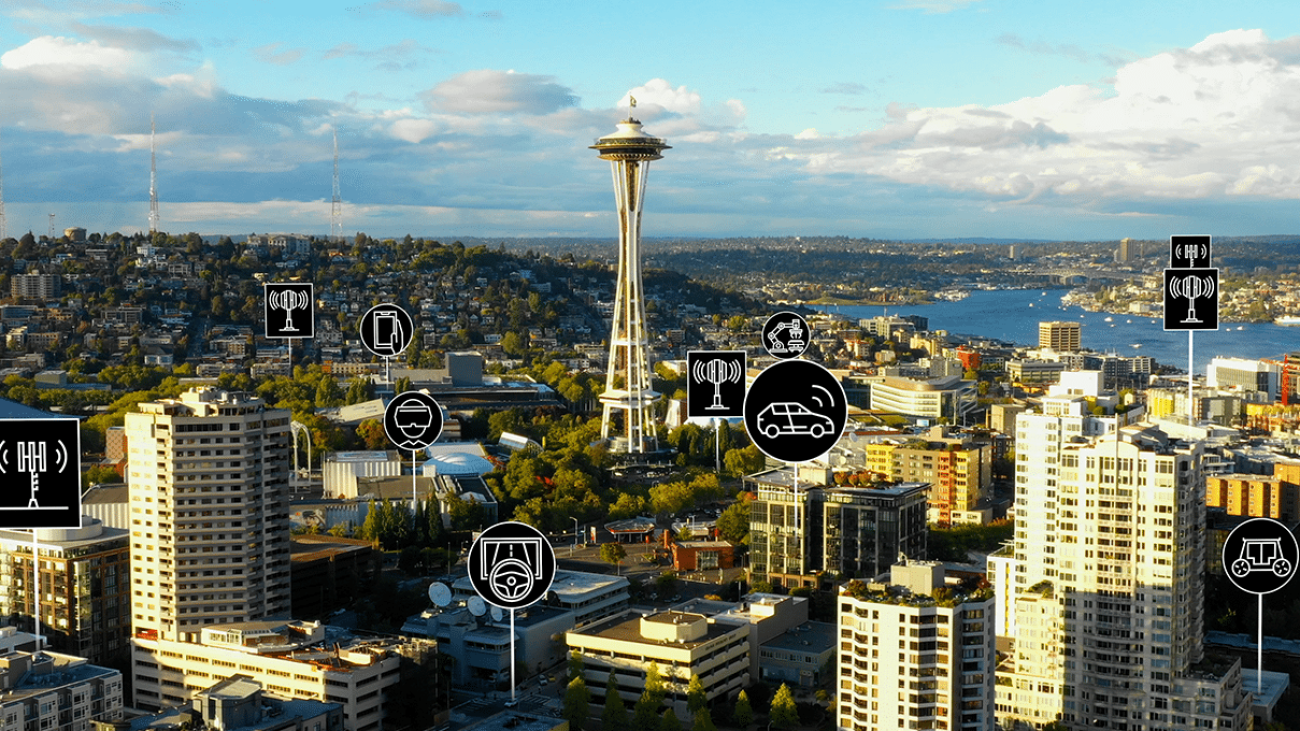Telecommunications providers are transforming beyond voice and data services with an AI computing infrastructure to optimize wireless networks and serve the next-generation needs of generative AI on mobile, robots, autonomous vehicles, smart factories, 5G and much more.
Launched today, NVIDIA AI Aerial is a suite of accelerated computing software and hardware for designing, simulating, training and deploying AI radio access network technology (AI-RAN) for wireless networks in the AI era.
The platform will become a critical foundation to allow network optimization at scale to serve the demands of a host of new services. This will provide significant savings in total cost of ownership and open telecom operators to new revenue opportunities for enterprise and consumer services.
NVIDIA AI Aerial enables telecommunications service providers to support teleoperations for manufacturing robots and autonomous vehicles, computer vision in manufacturing and agriculture, logistics, generative AI-driven co-pilots and personal assistants, emerging spatial computing applications, robotic surgery, 3D collaboration, and 5G and 6G advances.
Driving Networks of the Future With AI-RAN
NVIDIA AI Aerial is the world’s first AI-RAN platform capable of hosting generative AI and RAN traffic, as well as integrating AI into network optimization.
AI-RAN offers high-performance and energy-efficient software-defined RAN, improved network experience and new revenue opportunities with edge AI applications to host internal and third-party generative AI applications.
AI-RAN is foundational to the multipurpose networks of tomorrow that rely on AI-powered telecommunications capabilities.
Harnessing NVIDIA AI Aerial for Telecom Industry
The NVIDIA AI Aerial platform offers access to a full suite of capabilities, including a high-performance, software-defined RAN along with training, simulation and inference so that telecom operators can participate at any stage of development to deployment for next-generation wireless networks.
Some capabilities in the NVIDIA AI Aerial platform include:
- NVIDIA Aerial CUDA-Accelerated RAN includes software libraries to enable partners to develop and deploy high-performance virtualized RAN workloads on NVIDIA-accelerated compute platforms.
- NVIDIA Aerial AI Radio Frameworks include PyTorch- and TensorFlow-based software libraries to develop and train models for improving spectral efficiency and adding new capabilities to 5G and 6G radio signal processing. This also includes NVIDIA Sionna, a link-level simulator that provides development and training of neural network-based 5G and 6G radio algorithms.
- NVIDIA Aerial Omniverse Digital Twin (AODT) is a system-level network digital twin development platform. AODT enables physically accurate simulations of wireless systems — from a single base station to a comprehensive network with a large number of base stations covering an entire city. It incorporates software-defined RAN (Aerial-CUDA Accelerated RAN) and user-equipment simulators, along with realistic terrain and object properties of the physical world.
NVIDIA AI Aerial and AI RAN Innovation Center
NVIDIA is collaborating with T-Mobile, Ericsson and Nokia to accelerate the commercialization of AI-RAN with the establishment of the AI-RAN Innovation Center.
The center will tap into key capabilities of the NVIDIA AI Aerial platform. The collaboration is focused on bringing RAN and AI innovation closer together to deliver transformational network experiences for customers through the development of AI-RAN [link to the TMUS PR release on AI-RAN].
“AI-RAN is set to revolutionize the telecom industry, and the opening of the AI-RAN Innovation Center will help to take us on this journey by driving industry collaboration,” said Tommi Uitto, president of Mobile Networks at Nokia. “By bringing together leading companies in the telecom and AI industries, we can unlock the full potential of AI in our networks, improving performance, reducing costs and creating new opportunities for our customers. We are confident that AI-RAN will be a key driver of innovation in the future, and we are excited to be part of this revolution together with NVIDIA.”
“Ericsson has invested in our AI-RAN solution, allowing communications service providers to deploy portable RAN software running across multiple platforms. We are now evaluating the performance and cost of NVIDIA accelerated computing in this context”, said Fredrik Jejdling, EVP and head of Business Area Networks at Ericsson
NVIDIA AI Aerial Ecosystem
Key partners of the growing ecosystem of NVIDIA AI Aerial include Softbank and Fujitsu.
Ansys and Keysight are using NVIDIA Aerial Omniverse Digital Twin for testing and simulation systems, while partners and academia such as Deepsig, ETH-Zurich, Northeastern University and Samsung are collaborating on 6G research and NVIDIA Aerial AI Radio Frameworks.
Cloud stack software providers such as Aarna Networks, Canonical, Red Hat and Wind River; networking stack providers like Arrcus network and server infrastructure providers like Dell Technologies, Hewlett Packard Enterprise and Supermicro are key partners for NVIDIA AI Aerial. Edge Solution providers like Vapor.io, and system integrators like World Wide Technology, with its AI Proving Ground, [insert link to their blog] are accelerating decision-making for AI solutions.
Learn more about NVIDIA AI Aerial











 As part of the AI Opportunity Fund, Google.org is announcing over $25M in funding to support educators and students in developing AI skills.
As part of the AI Opportunity Fund, Google.org is announcing over $25M in funding to support educators and students in developing AI skills.